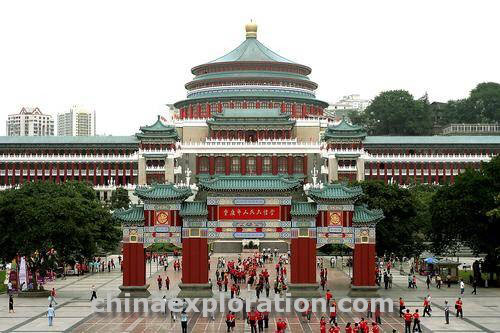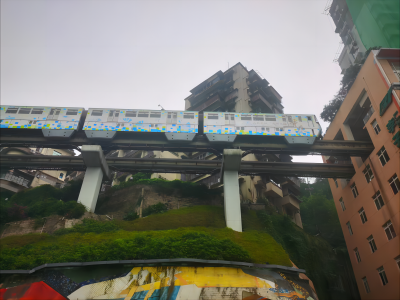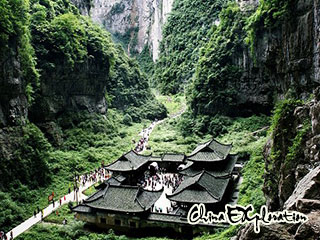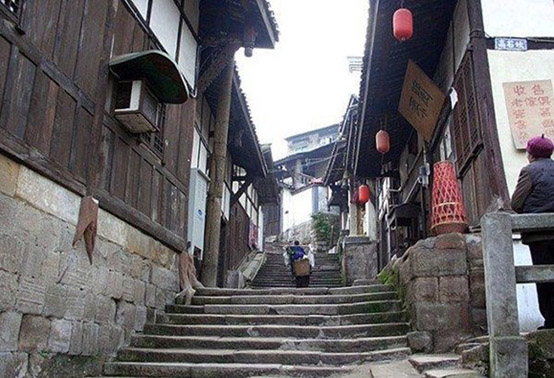search for a Trip
Chongqing city is known as the mountain city, river city. Chongqing is a model of mountain cities in China, the world's hot spring capital and the Chinese hotpot capital.
Chongqing administration Guide:
Chongqing is a municipality directly under the Central Government. As a famous national historical and cultural city and an international comprehensive transportation hub city, Chongqing is a national advanced manufacturing base, a western science and technology innovation center, the gateway of opening up, and a shipping center of the upper reaches of the Yangtze River. Jointly build a western financial center and an international consumption center city with Chengdu, with jurisdiction over 38 districts and counties, with a total area of 82,400 square kilometers. By the end of 2023, the permanent resident population is 31,9143 million. The GDP of Chongqing reached 3014.579 billion CNY in 2023.
Chongqing History Guide:
Chongqing is the birthplace of Ba Yu culture, with a history of more than 3,000 years, and the Xia and Shang and Ba countries built their capital here. In 316 BC, the empire of Qin destroyed the state of Ba, and it stationed troops in Jiangzhou and ba County. During World War II, Chongqing was the temporary capital of China.
Chongqing geography Guide:
Chongqing is located in the upper reaches of the Yangtze River, bordering Hubei and Hunan in the east, Guizhou in the south, Sichuan in the west and Shaanxi in the north. The jurisdiction is 470 km long from east to west, 450 km wide from north to south, covering an area of 82,400 square kilometers. Chongqing has Daba Mountain in the north, Wushan Mountain in the east, Wuling Mountain in the southeast and Dalou Mountain in the south. Chongqing is between 168 and 400 meters above sea level. The highest peak in the city is 2796.8 meters above sea level; the lowest is the Yangtze River surface in Wushan County, only 73.1 meters above sea level. In Chongqing, mountain area occupied 76%, hills accounted for 22%, valley and flat dam of only 2%.
And Chongqing landform structure is complex, showing four characteristics: first, the terrain is undulating. The east, south, southeast high, the west low. Second, the landform types are diverse. Mountain mainly, there are mid mountain, low mountain, high hills, middle hills, low hills, slow hills, platform and flat dam and other eight categories. Third, the regional distinction of the geomorphological form combination is obvious. Fourth, the Karst landform is widely distributed. There are characteristic Karst valley landscape, typical stone forest, peak forest, depression, mound, cave, dark river, canyon, sky hole seam and other Karst landscape.
Chongqing Transportation Guide:
1. Chongqing Aviation Airport
Chongqing Jiangbei International Airport is a national regional hub airport. In 2023, the throughput of Chongqing Jiangbei Airport is 44.675 million people.
2. Chongqing Shipping:
Chongqing is the largest inland port city in the upper reaches of the Yangtze River and even western China, and also the shipping center of the upper Yangtze River. The Yangtze River, Jialing River and its tributaries have formed a water transport network in the upper reaches of the Yangtze River with Chongqing municipality as the center, with 136 navigable rivers. There are dozens of ports as Wanzhou and Fuling, and passenger and cargo terminals along the river, and one thousand (ten thousand) ton ships can be navigable all year round.
3. Special Traffic Tools
There are two unique river-crossing road-ways in the central city of Chongqing: Jialing River rope-way and Yangtze River rope-way.
Crown escalators and Kaixuan Road elevators are used in downtown Chongqing as public transport
Many ferries are playing the role of both transportation and tourism functions. In 2020, Chongqing still had 16 ferry routes, with an annual passenger capacity of 536,000 and an average daily passenger flow of 1,468.
By the end of 2023, the city has 33 cruise ships running on the Three Gorges, among which 21 five-star cruise ships have been rated, 3 "two Rivers" enterprises and 8 "two Rivers" cruise ships.
In 2025, Chongqing will open 13 rail transit lines, with a total operating mileage of 463 kilometers and an average daily passenger volume of 2.4998 million.
Chongqing Schools and Education:
In 2023, there were 73 universities, 1,123 regular middle schools, 2,567 regular primary schools and 5,514 kindergartens in Chongqing.
TOP universities in Chongqing:
1.Chongqing University, 2.Southwest University, 3. Chongqing University of Posts and Telecommunications, 4. Chongqing Jiaotong University, 5. Chongqing Medical University, 6. Chongqing Normal University 7. Sichuan International Studies University, 8. Southwest University of Political Science and Law, 9. Chongqing Technology and Business University, 10. Sichuan Academy of Fine Arts, 11. Chongqing University of Technology
Chongqing medical and health care
By the end of 2023, Chongqing had 862 hospitals, 637 community health service centers (stations), 804 township health centers and 9,496 village clinics.
TOP hospitals in Chongqing:
1. The First Affiliated Hospital of Chongqing Medical University
2. The Second Affiliated Hospital of Chongqing Medical University
3. The Affiliated Children's Hospital of Chongqing Medical University
4. The Affiliated Stomatological Hospital of Chongqing Medical University
5. The Third Affiliated Hospital of Chongqing Medical University
6. The Affiliated Cancer Hospital of Chongqing University
7. Chongqing Hospital of Traditional Chinese Medicine
8. Chongqing Maternal and Child Health Care Hospital
9. Chongqing People's Hospital
Chongqing Consular Office Guide
By May 2024, with the approval of the Ministry of Foreign Affairs, Chongqing had set up 10 foreign consular offices in Chongqing, ranking the fourth in many Chinese cities:
1. Japan 2. Canada 3. Britain 4. Cambodia 5. Philippines 6. Hungary 7. Italy 8 Uruguay
9. Belarus 10. Myanmar 11. Ethiopia
Main attractions in Chongqing
People’s Great Hall
 It is situated on Renmin Lu, the People's Great Hall(renmin dahuitang), which was completed in April 1954, is an example of typical Chongqing architecture. Covering an area of 18500 square meters, this five-story rotunda is 65m high and 46m in diameter, spacious enough to hold over 4200 people and slightly reminiscent of the Temple of Heaven in Beijing.
It is situated on Renmin Lu, the People's Great Hall(renmin dahuitang), which was completed in April 1954, is an example of typical Chongqing architecture. Covering an area of 18500 square meters, this five-story rotunda is 65m high and 46m in diameter, spacious enough to hold over 4200 people and slightly reminiscent of the Temple of Heaven in Beijing.
Dazu Stone Carving
Dazu County, 162 km northwest of Chongqing, is very popular for its stone carving Buddha Statues - more than100 locations and 100,000 statues. These sculptures are a mixture of Buddhism. Taoism and Confucianism. Two of the locations are the most noted: Beishan (Northern Hill) and Baodingshan (Treasured Peak Mountain), listed by UNESCO (UN Education, Science and Culture Organization) in 1999 as " the World Cultural Heritage " .
The Northern Hill is a km away in the Northwest of the city of Dazu. The first statue was created in late Tang Dynasty (9 century), with more than 10,000 statues. Baodingshan (Treasure Peak Mountain) is 15 km to the Northeast of the city, first sculpted in South Song Dynasty (1179-1249). Centered at Dafowan (Grand Buddha Bay), nearly 10,000 Buddha statues are displayed along a 400 long U shape hill ridge, like a great picture roll unfolding before your eyes! The sculptures belongs to the later period of the grotto arts and indicates the rise of grotto carving in Sichuan after its decline in north China. Among these sculptures, you can see the 31 meter-high Nirvana of Sakyamuni, the 88 square meters " Thousand-Handed Avalokitesvara " and the 7 meter-high " Huayan Three Buddhist Images " as well as the ordinary secular sculptures like " the girl flute-player " , " the girl chicken-raiser " and so on. All these stone sculptures are well structured and vividly made.
Eling Park:
 The Eling park at 350 meters up offer a grand view of both the Yangtse and Jialing Rivers. It located in the Changjiang Lu, Yuzhong district,. The park was built in 1909 as a private garden, and was originally the home of Lee Yaoting and his son, a rich businessman. It was called " courteous park " at that time. Eling was originally named Edingling (Goose Nape Hill), for its narrow shape resembling the nape of a goose's neck. It faces Yangtze River to South, close Jialing River to north, get near downtown to east. It was on the mountain of the city.
The Eling park at 350 meters up offer a grand view of both the Yangtse and Jialing Rivers. It located in the Changjiang Lu, Yuzhong district,. The park was built in 1909 as a private garden, and was originally the home of Lee Yaoting and his son, a rich businessman. It was called " courteous park " at that time. Eling was originally named Edingling (Goose Nape Hill), for its narrow shape resembling the nape of a goose's neck. It faces Yangtze River to South, close Jialing River to north, get near downtown to east. It was on the mountain of the city.
Because of its good location and beautiful natural scenery, it was to be the ideal places for rest and visit for long history. Many famous people have stayed or visited here for different reasons, such as Mr. and Mrs. Chiang-Kai-Shek, the premier of Kumingtang, Feng Yuxiang, Lin Sen, Sun Ke, Song Ziwen, He Yingqin, Yan Xishan, Chen Cheng, they all were the important ministers of Kumingtang. The Britain ambassador Karer had stayed here for 5 years. 1950, the Courteous Park was the location of Southwest military area. The minister of Chinese CPC, Dong Biwu, Liu Bocheng, Helong had lived here. The park has towers, pavilions and bamboo groves of unique styles. with special plant species and a newly built tower (Liangjiang Pavilion) provides views of the entire city. In 1958, large-scale of restoration was carried out on the site of Lee Garden and the park was renamed " Eling Park ".

Hongyadong Cave is located in Cangbai Road, the core business district of Chongqing municipality. It is also the riverside area where the Yangtze River and Jialing River meet. Hongyadong is a large-scale functional area integrating entertainment, leisure, sightseeing and catering in Chongqing. It is also the most popular, fashionable and charming urban leisure area in Chongqing.

Ciqikou ancient town

Ciqikou ancient town is located in the northeast of Shapingba District, Chongqing city. Ciqikou ancient town, built in the reign of Emperor Xianping of Song Dynasty in 11th century, it is the only ancient town with the largest scale and the most traditional folk customs and folk customs in the main urban area of Chongqing. The traditional residential buildings, stone ladder streets, and the remaining temples and temples in the ancient town are the natural museum of residential buildings in Bayu Mountain.
Climate in Chongqing
Chongqing arguably has one of the most unpleasant climates in the country, situated in the subtropical zone and fostering an intensive and moist atmosphere. The annual average temperature here is 18 oc with lows of 6 to 8oc in winter and highs of 27 to 29oc in summer.
|
Month |
Jan |
Feb |
Mar |
Apr |
May |
Jun |
Jul |
Aug |
Sep |
Oct |
Nov |
Dec |
|
Temperature (Celsius) |
7.0 |
9.1 |
14.2 |
19.0 |
22.1 |
25.0 |
32.2 |
38.2 |
31.1 |
28.0 |
20.0 |
14.2 |
China Attractions Guide
- Anhui Attractions
- Beijing Attractions
- Chongqing Attractions
- Fujian Attractions
- Gansu Attractions
- Guangdong Attractions
- Guangxi Attractions
- Guizhou Attractions
- Hainan Attractions
- Henan Attractions
- Hongkong Attractions
- Hubei Attractions
- Hunan Attractions
- Inner Mongolia Attractions
- Jiangsu Attractions
- Jiangxi Attractions
- Manchuria Attractions
- Ningxia Attractions
- Qinghai Attractions
- Shaanxi Attractions


